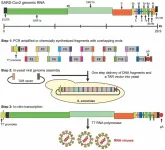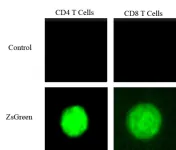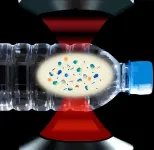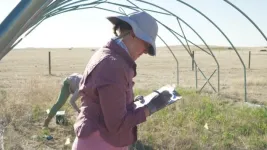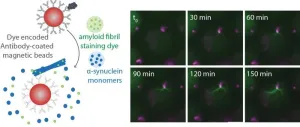Published in Health Affairs, this study was supported by the National Institute on Drug Abuse (NIDA) and the National Center for Advancing Translational Sciences (NCATS), both part of NIH, and led by researchers at Oregon Health & Science University (OHSU). The results build on previous research revealing that only one in four residential treatment centers caring for U.S. adolescents under 18 years old provide buprenorphine, a medication to treat opioid use disorder.
“The ability to access timely, evidence-based treatment for addiction can be a matter of life or death, and the current system too often fails young people,” said Nora Volkow, M.D., director of NIDA. “We need to make access to timely, affordable, and evidence-based care the norm across treatment settings.”
In 2022, an estimated 2.2 million people between the ages of 12 and 17 had a substance use disorder in the past year, with 265,000 having an opioid use disorder, according to the latest National Survey on Drug Use and Health, which is produced by the Substance Abuse and Mental Health Services Administration (SAMHSA). In addition, previous data have reported a dramatic rise in overdose deaths among teens between 2010 and 2021, which remained elevated well into 2022. This increase is largely attributed to illicit fentanyl, a potent synthetic drug, contaminating the supply of counterfeit pills made to resemble prescription medications.
Residential treatment is one part of a broader continuum of care for adolescents with substance use disorders, in addition to treatment provided in outpatient specialty care, primary care, and other settings. However, little is known about the accessibility or cost of residential treatment for adolescents with opioid use disorder. To address this gap, researchers at OHSU sought to characterize treatment access and costs of U.S. residential treatment facilities that treat patients with opioid use disorder who are younger than age 18.
Using the FindTreatment.gov database maintained by SAMHSA, and SpyFu, a search analytics company that compiles data on search engine advertisements, the researchers identified a list of 354 centers across the U.S. that indicated that they provided residential addiction treatment services to people under the age of 18 to include in the analysis.
Researchers called these facilities to inquire about treatment and services offered as potential users of these services for a 16-year-old with a recent non-fatal fentanyl overdose. Between October and December 2022, the study team called the facilities in a random order and confirmed that 160 (45%) of these facilities provided residential treatment to patients under the age of 18.
Of the 160 residential addiction treatment facilities found to provide treatment to young patients, the researchers found that 66 facilities (41%) were for-profit, and 94 facilities (59%) were nonprofit. For-profit treatment centers were more likely to have space immediately available (77%) compared to nonprofit facilities (39%) but at roughly triple the cost (on average, $1,211 reported daily cost for for-profit facilities vs. $395 for nonprofit facilities). Sixty-five facilities (40%) estimated the number of days until a bed opened. The average wait time for a bed in a for-profit facility was 19 days, and the average wait time for a bed in a nonprofit facility was 31 days.
The authors report that just over half of the facilities (57%) accepted Medicaid, with a stark contrast by facility profit orientation: One in five for-profits accepted Medicaid, compared with four in five nonprofits. In addition, in 23 states, researchers did not identify any adolescent residential treatment centers that accepted Medicaid. Overall, 57% of all facilities that accepted Medicaid reported a waitlist, compared to 19% of facilities that did not accept Medicaid.
Only seven states had a facility that accepted Medicaid, had a bed open the same day, and offered buprenorphine.
“From our previous work, we know that the majority of residential treatment centers treating adolescents do not offer buprenorphine, the one medication for opioid use disorder that is approved for use in adolescents,” said lead author Caroline King, M.D., Ph.D., who conducted the study as a medical student at OHSU and now serves as an emergency medicine resident in the Yale School of Medicine. “These new results give us an even fuller picture, highlighting that not only is the care in residential treatment facilities often incomplete, but it can also be costly and hard to access.”
The authors note that further research is needed to identify how to best expand access to affordable, evidence-based treatment for adolescents with opioid use disorder.
“When your kid is in a crisis and needs treatment, it can be terrifying to know where to turn. Many parents or family members who look for residential care find the experience profoundly disheartening,” said Senior Author Ryan Cook, Ph.D., research and training scientist for addiction medicine at OHSU. “Systems-level changes are needed to ensure effective, affordable treatment options for adolescents.”
HHS is committed to expanding access to care for adolescents in need of substance use disorder treatment and support. In addition to residential treatment, there are other treatment options for children and adolescents covered by Medicaid. The Centers for Medicare and Medicaid (CMS) has engaged in a multifaceted approach to strengthen access to mental health and substance use disorder treatment for children and adolescents enrolled in Medicaid and CHIP including through several on-going initiatives to improve access through schools. In addition, CMS is working closely with state Medicaid agencies to ensure compliance with the Early, Periodic, Screening, Diagnostic, and Treatment (EPSDT) benefit that requires state to provide children and adolescents access to all medically necessary care including care for mental health conditions and substance use disorders.
For more information on substance and mental health treatment programs in your area, call the free and confidential National Helpline 1-800-662-HELP (4357) or visit FindTreatment.gov. Anyone who needs assistance with the first steps in pursuing help can find guidance at FindSupport.gov.
Reference: C King, et al. Adolescent Residential Addiction Treatment In The US: Uneven Access, Wait Lists, And High Costs. Health Affairs. DOI: 10.1377/hlthaff.2023.00777 (2024).
###
About the National Institute on Drug Abuse (NIDA): NIDA is a component of the National Institutes of Health, U.S. Department of Health and Human Services. NIDA supports most of the world’s research on the health aspects of drug use and addiction. The Institute carries out a large variety of programs to inform policy, improve practice, and advance addiction science. For more information about NIDA and its programs, visit www.nida.nih.gov.
About the National Institutes of Health (NIH): NIH, the nation’s medical research agency, includes 27 Institutes and Centers and is a component of the U.S. Department of Health and Human Services. NIH is the primary federal agency conducting and supporting basic, clinical, and translational medical research, and is investigating the causes, treatments, and cures for both common and rare diseases. For more information about NIH and its programs, visit www.nih.gov.
About substance use disorders: Substance use disorders are chronic, treatable conditions from which people can recover. In 2022, nearly 49 million people in the United States had at least one substance use disorder. Substance use disorders are defined in part by continued use of substances despite negative consequences. They are also relapsing conditions, in which periods of abstinence (not using substances) can be followed by a return to use. Stigma can make individuals with substance use disorders less likely to seek treatment. Using preferred language can help accurately report on substance use and addiction. View NIDA’s online guide.
NIH…Turning Discovery Into Health®
END
